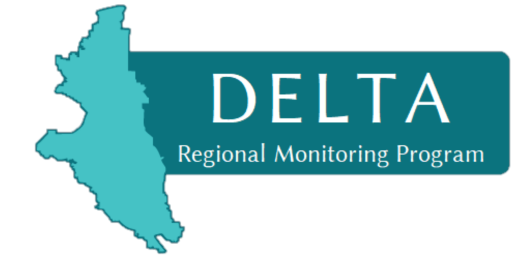the Delta Regional Monitoring Program
About Us
Why Was the DRMP formed?
Cities, counties, and the state are spending billions of dollars to protect and restore the waters in the Delta. Today, investments are being made to upgrade wastewater and stormwater infrastructure, reduce runoff from farms, and to manage contaminated sediment. Also at stake are decisions on how to manage water supplies.
Although dozens of agencies spend over $10 million per year to monitor Delta water, key questions have gone unanswered. In the initial years of monitoring, the DRMP focused on contaminants such as pesticides and mercury, seeking to better understand their role in declines in the health of Delta ecosystems and fish populations. As the program has further developed, the Delta RMP has widened its scope to include additional monitoring sectors that affect Delta ecosystem health including monitoring of constituents of emerging concern and assessments of nutrient inputs and impacts to the Delta.
The Delta Regional Monitoring Program (Delta RMP) was initiated under the encouragement of the Central Valley Water Board with the primary goal of tracking and documenting the effectiveness of beneficial use protection and restoration efforts through comprehensive monitoring of water quality constituents and their effects in the Delta. The Delta RMP is currently implemented by an independent non-profit corporation, also called the Delta Regional Monitoring Program (DRMP). The DRMP Board of Directors is responsible for administering the program including the development and approval of budgets and expenditures. The BOD forms committees of the Board and appoints members to those committees including the Executive Committee which oversees the day-to-day operations and the Steering Committee which provides recommendations on the program. Additional committees are formed as needed including technical committees with scientific expertise to advise on the monitoring design and data collection associated with the main focus areas of the Delta RMP including mercury, nutrients, constituents of emerging concern and pesticides/toxicity.
DRMP ARea
Who Participates in the DRMP?
For more information on the organization of the DRMP, please reference our Structure and Governance page.
Why should an agency or premittee participate in the DRMP?
Participating dischargers are approved to discontinue specific individual monitoring requirements. To provide agencies a basis for deciding whether to develop their own monitoring program or to join the Delta RMP, the Regional Board, in collaboration with discharger representatives, developed guidance for Delta RMP participation. Dischargers should make this evaluation with a full understanding of current and future monitoring requirements.
Stakeholder involvement may better incorporate management actions that are effective and efficient into regulatory policy. In this way, compliance can be measurable, achievable, and reasonable. The Central Valley Water Board has the authority to require monitoring for these future regulatory programs but prefers to use the Delta RMP as the means to collect representative data or perform science investigations. For example, a recent area of interest is Harmful Algal Blooms (HABs) and additional funds from the Delta RMP have gone to funding various studies and monitoring programs to assist with collaborative research and data assessment in the Delta.
Grant funding for science and monitoring programs is not generally useful on a small scale when the administrative burden may consume agency staff time beyond the benefit of the funds. A coordinated proposal is more attractive to grant reviewers, especially with built-in technical review and administration.
Without a collaborative science process, the individual agency science burden increases. The Delta will always be a highly managed and politicized receiving water and water resource. Direct participation by local agencies and permittees in the science process will better balance the discussion of Delta protection and reasonable and efficient use of public funds.
Participation does not have to be a significant additional time effort for small agencies and entities with limited staff or technical expertise. The Delta RMP Board of Directors includes seats that are required to represent multiple agencies and entities rather than just their own. Many smaller agencies and entities then may participate in quarterly or semi-annual update meetings held by their Board of Director representatives.
The Delta RMP financial model was originally designed around required monitoring trades (i.e., permit requirements satisfied by Delta RMP participation). The Delta RMP evaluates funding programs and pursues grant funding. The Delta RMP has authority to allow other financing structures to support specific stakeholder needs. This may be helpful where very specialized skills are required or to develop guidance for monitoring or assessment programs.
